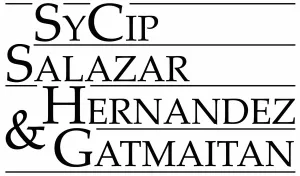On December 14, 2022, the Bangko Sentral ng Pilipinas ("BSP") issued Circular No. 1163, series of 2022 and amended the miscellaneous rules on deposits under Section 276 of the Manual of Regulations for Banks (the "MORB"). The amendments aim to provide guidance on the handling of joint accounts, the conversion of "and/or" accounts into either "and" or "or" accounts, as well as the acceptability of electronic signatures and the Philippine Identification Card ("Phil-ID") as sufficient proof of identity.
1. What proof of identity is required to open any type of deposit account or establishing relationship under the true and full name of the depositor?
All banking institutions are required to obtain a minimum of three specimen signatures, simultaneously executed by the depositor, either wet or electronic, or biometrics (such as fingerprints, iris scans, or facial recognition images) from their depositors. However, banks may, at their option, require their depositors to submit clear ID photos. Yes, electronic signatures may be accepted, consistent with Section 8 of the Electronic Commerce Act (Republic Act No. 8792).
2. Are electronic signatures accepted by banking institutions?
Yes, electronic signatures may be accepted, consistent with Section 8 of the Electronic Commerce Act (Republic Act No. 8792).
3. Is the Phil-ID accepted as an official and sufficient proof of identity by banking institutions?
Yes, pursuant to Republic Act No. 11055 or the Philippine Identification System ("PhilSys") Act, the PhilSys Card Number ("PCN") or PhilSys Number ("PSN") derivative, or the Phil-ID card, in physical or digital form, shall be accepted as official and sufficient proof of identity, subject to the appropriate authentication methods, without need to present other forms of identification.
4. What is a joint account?
A joint account is a deposit account (i) held jointly by two or more natural persons, or by two or more juridical persons or entities; or (ii) held by a juridical person or entity jointly with one or more natural persons. The joint account is held under the name of the depositors described as either "and" or "or".
5. What rules govern the funds deposited in the joint deposit account?
Joint deposit accounts are governed by the rules on co-ownership under the Philippine Civil Code (Republic Act No. 386, as amended). In general terms, this means that unless the contrary is proved, the share belonging to the joint depositors shall be presumed equal, and the benefits and charges in the joint account shall be proportional to their respective shares.
6. When are depositors of joint accounts be allowed to withdraw and deposit funds?
Depositors of joint accounts described using the conjunction "and" shall only be allowed to withdraw funds with the authority of all the depositors named in the joint account. In contrast, any depositor of a joint account described using the conjunction "or" (in other words, any depositor, acting separately) may be allowed to withdraw funds even without the authority of the other depositors named in the account. Under both types of joint accounts, any depositor may deposit funds even without the authority of the other depositors named in the account.
7. Are electronic access and transactions allowed for joint accounts?
Yes, provided that for electronic withdrawals/fund transfer/payments from a joint "and" account, the bank should have appropriate system, procedures, and controls to obtain the authorization of all the depositors in the joint account prior to effecting the transactions.
8. What shall the bank observe in case of death of one of the depositors in either type of joint account?
The bank shall observe applicable laws, rules, and regulations, including existing implementing policies, among others, to ascertain the identity and right to claim of the heir/s or its authorized representative before allowing any withdrawal from the joint deposit account, which law, rules and regulations, and policies should be fully disclosed to the depositors. In this connection, Section 97 of the Tax Code provides that "[i]f a bank has knowledge of the death of a person, who maintained a bank deposit account alone, or jointly with another, it shall allow any withdrawal from the said deposit account, subject to a final withholding tax of six percent (6%)."
9. What shall the bank ensure in case of transactions that will restrict the rights or interest of the depositors?
The bank shall ensure that the governing rules for these transaction/s and their attendant risks or obligations are explicitly, clearly, and adequately provided in the terms and conditions and are explained to, understood, and accepted by the joint account holders.
10. What shall happen to existing joint "and/or" deposit accounts during the transitory period of one year from the effectivity of Circular No. 1163, series of 2022?
Within one year from effectivity of this Circular, existing joint "and/or" deposit accounts shall be converted into joint accounts described using the conjunction "and" or "or" with full consent of and disclosure to the joint account holders. Existing joint time deposits shall be converted into joint accounts aligned with this Circular upon renewal and/or rollover of the account.
11. What shall happen if the consent of the joint "and/or" depositors cannot be obtained within the one-year transitory period?
These accounts shall be monitored by the bank until such time that the joint depositors consent thereto and accept the terms and conditions.
Read the latest Banking Bulletin here or via this link.
The content of this article is intended to provide a general guide to the subject matter. Specialist advice should be sought about your specific circumstances.

